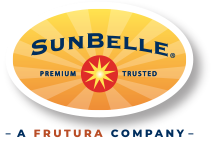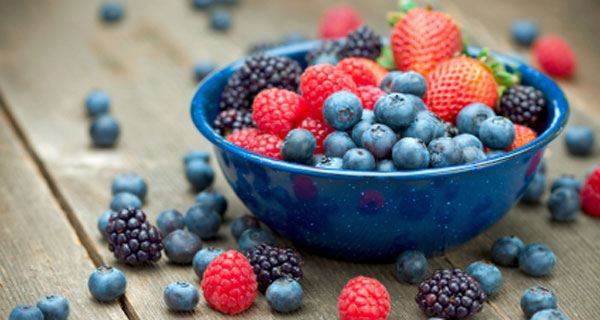Health Glossary
Berry, Vegetable, and Fruit Words from the Realm of Science and Medicine
For most of us, berries, fruits and vegetables are just a tasty and healthful treat. For researchers they offer a cornucopia of compounds that increasingly appear to be associated with better health
 Anthocyanidins
Anthocyanidins Antioxidants
Antioxidants Catechins
Catechins Dietary Fiber
Dietary Fiber Ellagic Acid
Ellagic Acid Flavonoids
Flavonoids Folic Acid (Vitamin B9)
Folic Acid (Vitamin B9) Gallic Acid
Gallic Acid Lutin and Zeaxanthin
Lutin and Zeaxanthin Lycopone
Lycopone Magnesium
Magnesium Nutrients
Nutrients Oxygen Radical Absorption Capacity
Oxygen Radical Absorption Capacity
 Phytochemicals
Phytochemicals Proanthocyanidins
Proanthocyanidins Quercetin
Quercetin Rutin
Rutin Salicylates
Salicylates Vitamin A
Vitamin A Vitamin B1
Vitamin B1 Vitamin B2
Vitamin B2 Vitamin B3
Vitamin B3 Vitamin B6
Vitamin B6 Vitamin B7
Vitamin B7 Vitamin C
Vitamin C

Anthocyanidins
Color pigments in berries which are antioxidants and associated with lower cancer risks and better health when aging when it comes to the urinary tract and memory functions. These red, blue and purple pigments may preserve brain functions which deteriorate with age.
 What is the buzz about
antioxidants?
What is the buzz about
antioxidants?Plant products — fruits vegetables but particularly berries — contain a host of antioxidants that, when eaten, can protect the human body by neutralizing free radicals or unstable oxygen molecules which damage cells and are a major source of disease and age related disabilities.
Through photosynthesis plants convert the sun’s energy into energy plants can use. But plants need to protect themselves from the harmful effects of the sun’s ultraviolet rays. Antioxidants and other phytochemicals, including dark pigments, are the protection plants create. Humans, when they eat plants, use these same antioxidants to rid and neutralize the free radicals and unstable oxygen that are bi-products of natural processes and environmental harm. Catechins
Catechins
These specific flavonols found in berries and green tea are thought to support the body’s antioxidant defense system. Dietary Fiber
Dietary Fiber
Helps lower blood cholesterol, reduces conditions linked to heart disease, facilitates healthy digestion. Ellagic Acid
Ellagic Acid
Scientists believe ellagic acid plays a major role in tumor reversal and cancer prevention. Plus this phenolic compound has anti-viral and anti-bacterial properties. Flavonoids
Flavonoids
Under study for anti-inflammatory effects and may reduce onset of cardiovascular disease and cancer. The British Journal of Nutrition in 2007 noted, “Flavonoids, a large group of polyphenolic compounds abundant in vegetables, fruits and berries, may be responsible for the health-promoting effects of plant foods. To date several epidemiological studies on flavonoid intake and the risk of cardio vascular disease have been published and the results suggest that flavonoids may protect against cardiovascular disease.” Folic Acid (Vitamin B9)
Folic Acid (Vitamin B9)
Particularly necessary for pregnant women, deficiencies of folic acid are linked to birth defects, increased risk of colon cancer and age-related hearing loss. Gallic Acid
Gallic Acid
Antioxidant specifically linked to inhibiting cell proliferation in prostrate cancer. Lutin and Zeaxanthin
Lutin and Zeaxanthin
Found together in nature these are concentrated in the human retina. Lycopone
Lycopone
Identified as reducing the risk from a host of cancers, lycopene has been particularly associated with tomatoes. Magnesium
Magnesium
Helps maintain normal blood pressure and essential to healthy bones and teeth. Nutrients
Nutrients
Nutrients are compounds in food that provide energy, structural materials and regulating agents essential for life. There are six classes of nutrients: proteins, fats, carbohydrates, vitamins, minerals and water. Oxygen Radical Absorption
Capacity
Oxygen Radical Absorption
Capacity
ORAC as it is known is a means of measuring the ability of a substance to sponge up the free radicals which can damage DNA and facilitate cancer. The ORAC assay measures the free radical scavenging activity against the most common reactive oxygen species found in the body. Berries and other fruits and vegetables have the highest ORAC scores among all consumed foods. Phytochemicals
Phytochemicals
Non-nutritive chemicals in plant based foods that promote health or decrease the risks of disease or effects of aging. While not “essential to life,” phytochemicals such as phenolic acids, flavonoids, terepenes and phytosterols contribute to health in a myriad of ways. Proanthocyanidins
Proanthocyanidins
A compound found in blueberries and cranberries that may help prevent harmful bacteria from adhering to the wall of the urinary tract. Quercetin
Quercetin
A flavonol that operates as an anti-carcinogen, an antioxidant and protects against cancer and heart disease. Linked to increased sports endurance. Rutin
Rutin
A bioflavonoid associated with vascular health and with anti-inflammatory and anti-allergenic properties. Salicylates
Salicylates
Shown to inhibit the production of COX -I and COX -II enzymes, salicylates may help reduce pain associated with arthritis, gout and other inflammatory conditions. Salicylic acid may work like small doses of aspirin to inhibit anteriosclerosis. Vitamin A
Vitamin A
Helps vision, embryonic development, growth and immune functions. Vitamin B1
Vitamin B1
Supports the metabolism. Vitamin B2
Vitamin B2
Helps metabolize other vitamins and minerals and facilates antioxidants. Vitamin B3
Vitamin B3
Works with over 200 enzymes to metabolize energy. Vitamin B6
Vitamin B6
Vital to repairing DNA. Vitamin B7
Vitamin B7
Helps the body to utilize glucose. Vitamin C
Vitamin C
This vitamin, made of absorbic acid, is a powerful antioxidant and essential for health by absorbing iron, supporting collagen formation and bone strength.






